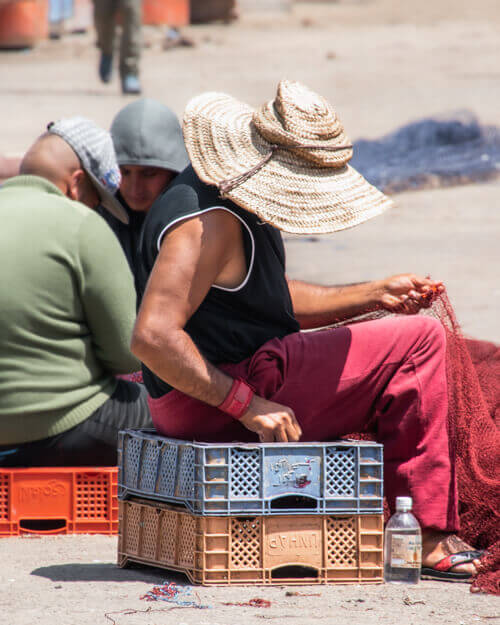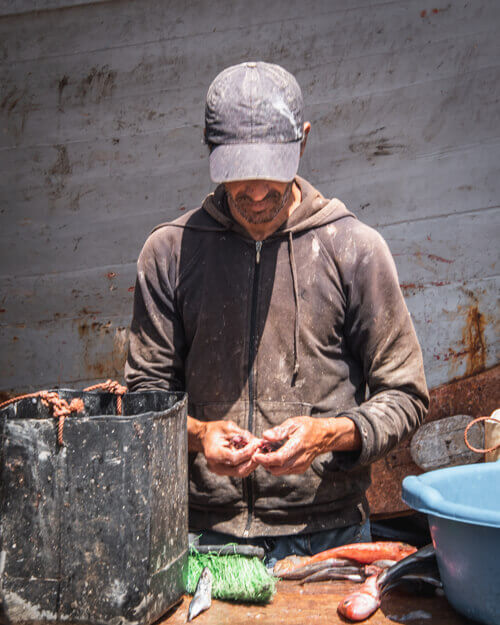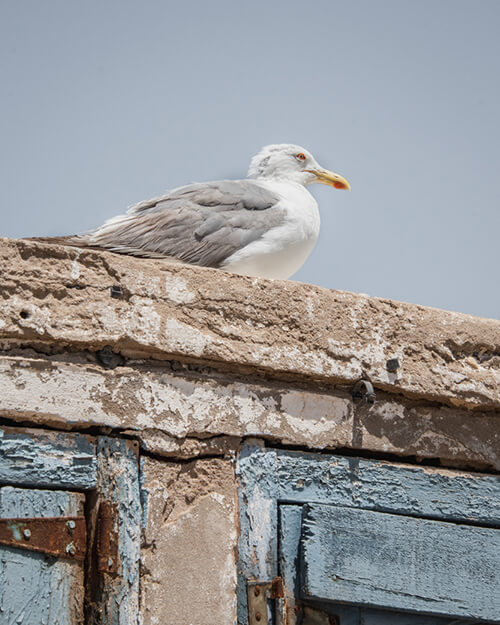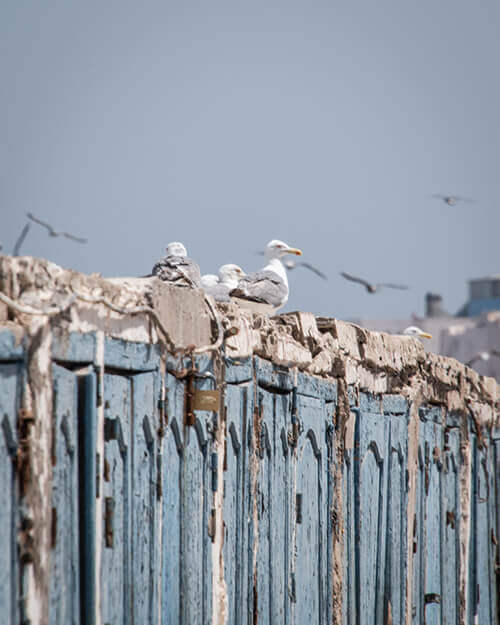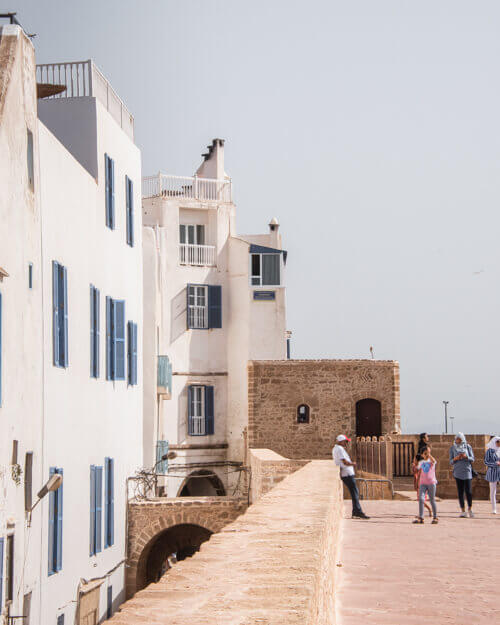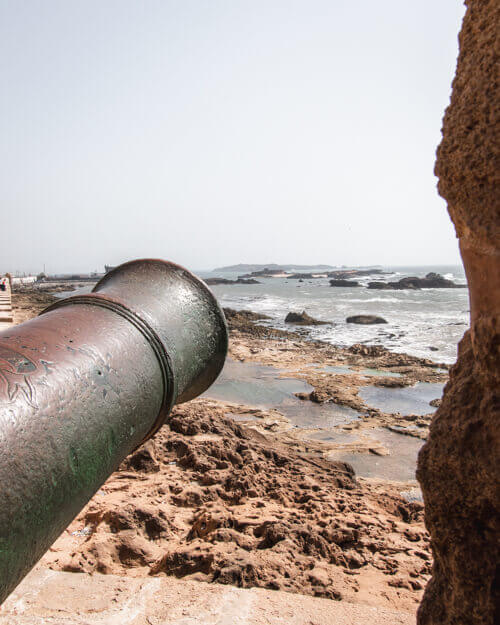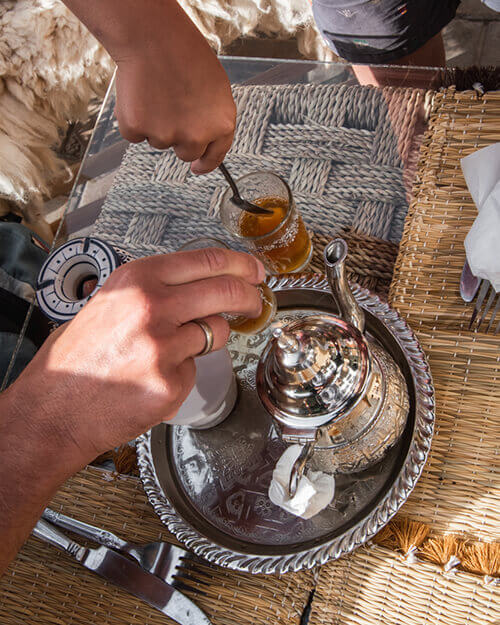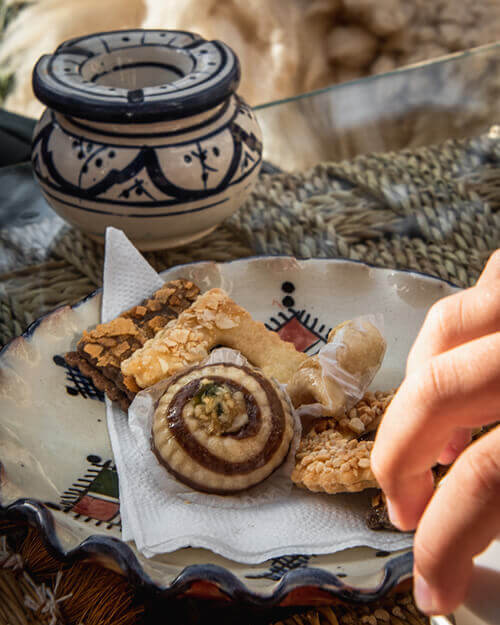It’s only a bus ride away from the big, hectic city of Marrakech – but it feels like an entirely different Moroccan world. Here, we’ll share a bit about the town we fell in love with, and we hope it will inspire you to visit Essaouira too.
We actually really liked Marrakech – the dry desert heat, the pulse of the city, the historic and vibrant souk, the street musicians and the snake charmers. But after three days in Marrakech, we started dreaming of seeing other sides of Morocco – and most of all, of letting the salty Atlantic wind cool our cheeks.
So we decided to chase new adventures. We boarded a bus in central Marrakech and drove straight west – heading directly for the ocean.
And what we had dreamed of, we found. The beautiful old port town of Essaouira had it all: striking white buildings surrounded by ancient city walls, a small picturesque fishing port with the most beautiful old wooden boats, seagulls crying as they filled the sky, a beach – and (strong!) winds from the Atlantic Ocean.
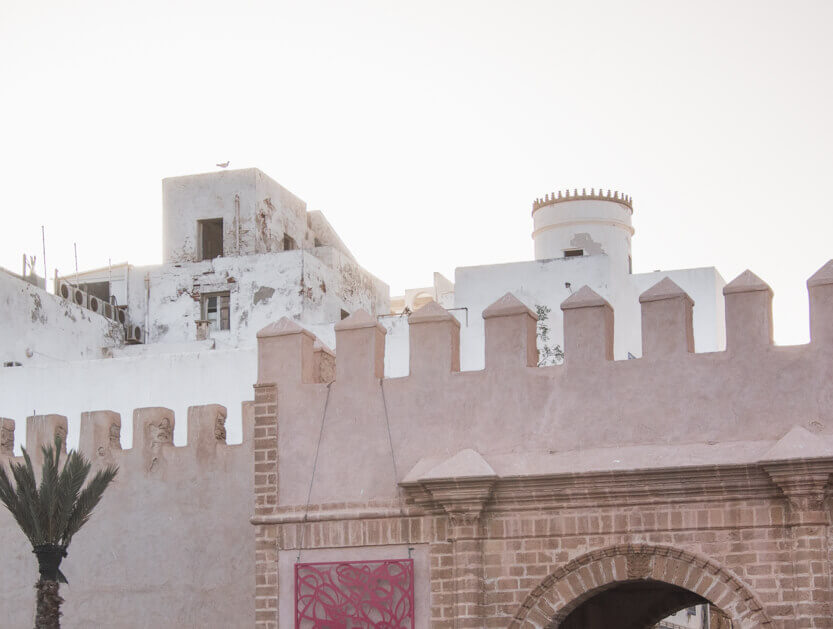
Essaouira, the Wind-Blown City
The first thing that greeted us as we stepped off the bus was a gentle breeze and the scent of salt. Then came the cries of the seagulls. Soon, the breeze turned into a strong westerly gale, blowing straight in from the Atlantic Ocean. We had arrived in Essaouira.
Essaouira, once called “Souira” after the Berber word tasso, meaning “the little fortress,” lay before us with its tall city walls on our right, and the sea shimmering in the mist to our left. We were about to pass through the city gates to find the riad we had booked through Airbnb.
Inside the walls, everything grew quiet again. Seagulls were everywhere, and wherever we stepped, there were fish bones and crab claws scattered across the ground – leftovers from their feast. Cats lingered in the dark corners of the alleys, their green eyes glowing, waiting for the next meal to drop from above.
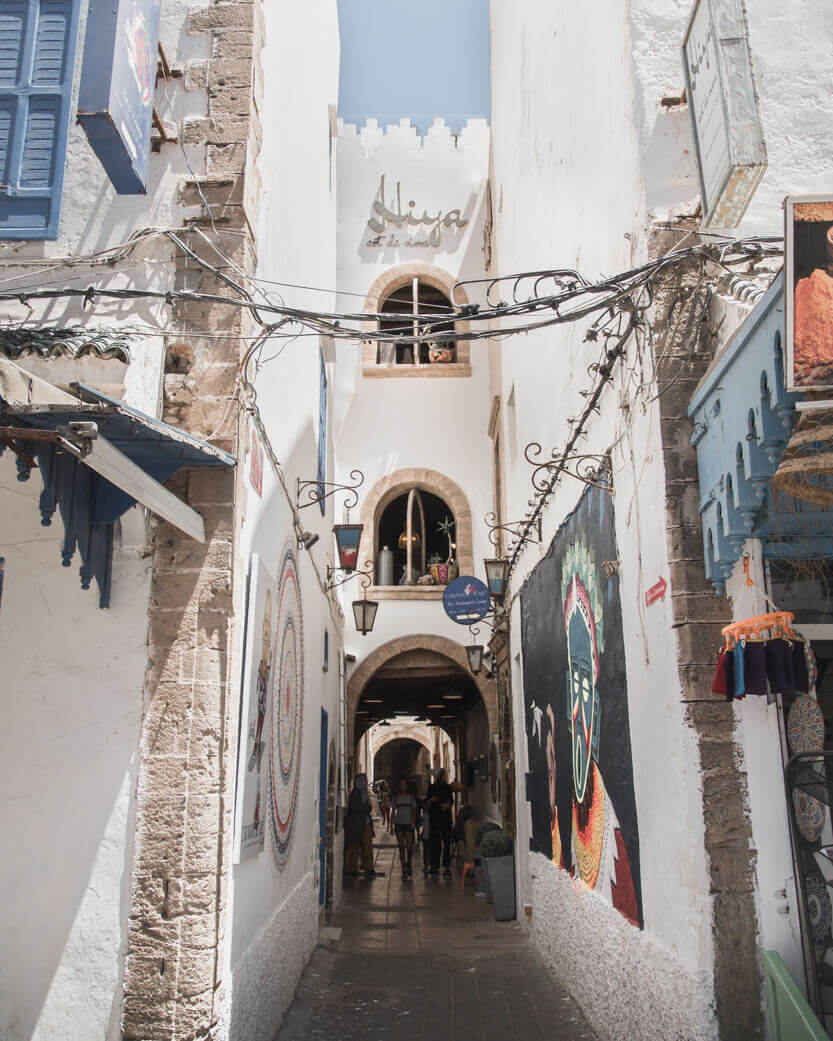
After settling into our riad, we went out to explore the city. Within the fortified medina, Essaouira opened up to us with its spice-scented streets and palm-lined avenues. It felt almost like being freed from the heat – the strong wind rushed through the streets, lifting our skirts and sending hats flying.
We loved browsing the many art galleries and small shops filled with the scent of essential oils. Everywhere, people were sipping sweet mint tea – in shops, behind counters, and wherever people gathered to talk.
So many fascinating people
One of the most captivating things about Essaouira is how it feels like a multicultural mosaic – a city where people of many different backgrounds live side by side, across borders of land, culture, and religion. Essaouira lies, for instance, at the crossroads between two tribes: the Arab Chiadma to the north and the Haha Berbers to the south. Add to that the Gnawa people, originally from farther south in Africa – and, of course, the Europeans.
I felt like I could keep discovering something new and fascinating everywhere I looked.
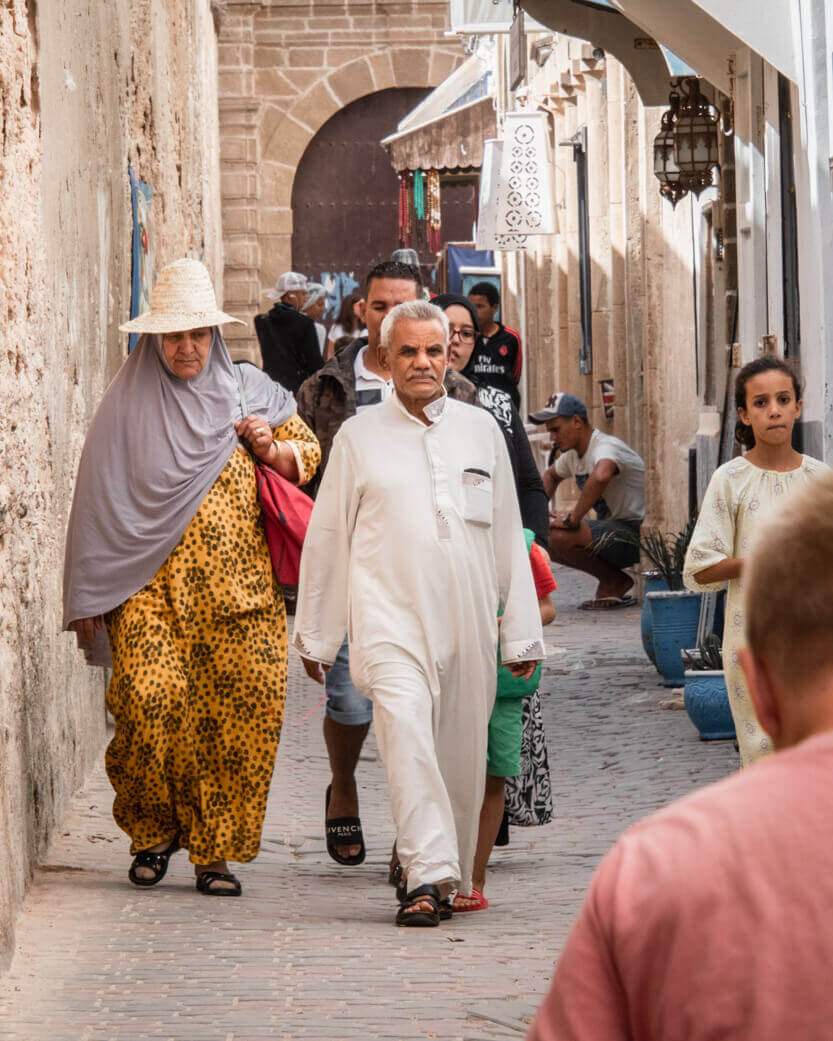
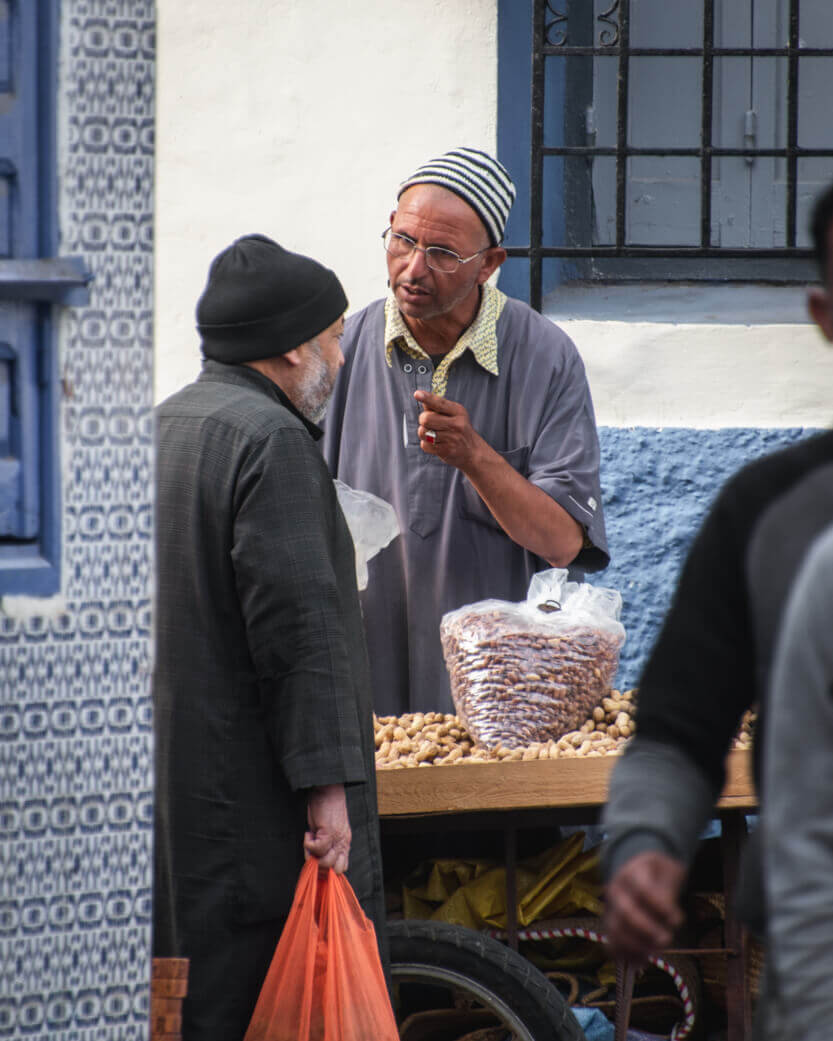
Discover Essaouira’s souks
Essaouira’s medina, with its white walls, blue doors, and shutters, is ranked by UNESCO as one of the most beautiful in Morocco and has been on the UNESCO World Heritage list since 2001. The medina is filled with souks – small markets where you can buy handmade goods, art, ceramics, essential oils, spices, souvenirs, and all kinds of Moroccan treasures.
Let yourself be enchanted by the small shops
For those who love shopping, Essaouira is a true shopping adventure in many ways. You can find all sorts of beautiful things, and when you haggle over prices, you might be lucky enough to strike up a delightful conversation with the locals.
It’s wonderful to stroll between the many small shops. Sometimes, you might lose track of where you are. Luckily, the medina isn’t very large, and sooner or later you’ll come across the city walls, which somehow give you a direction to follow.
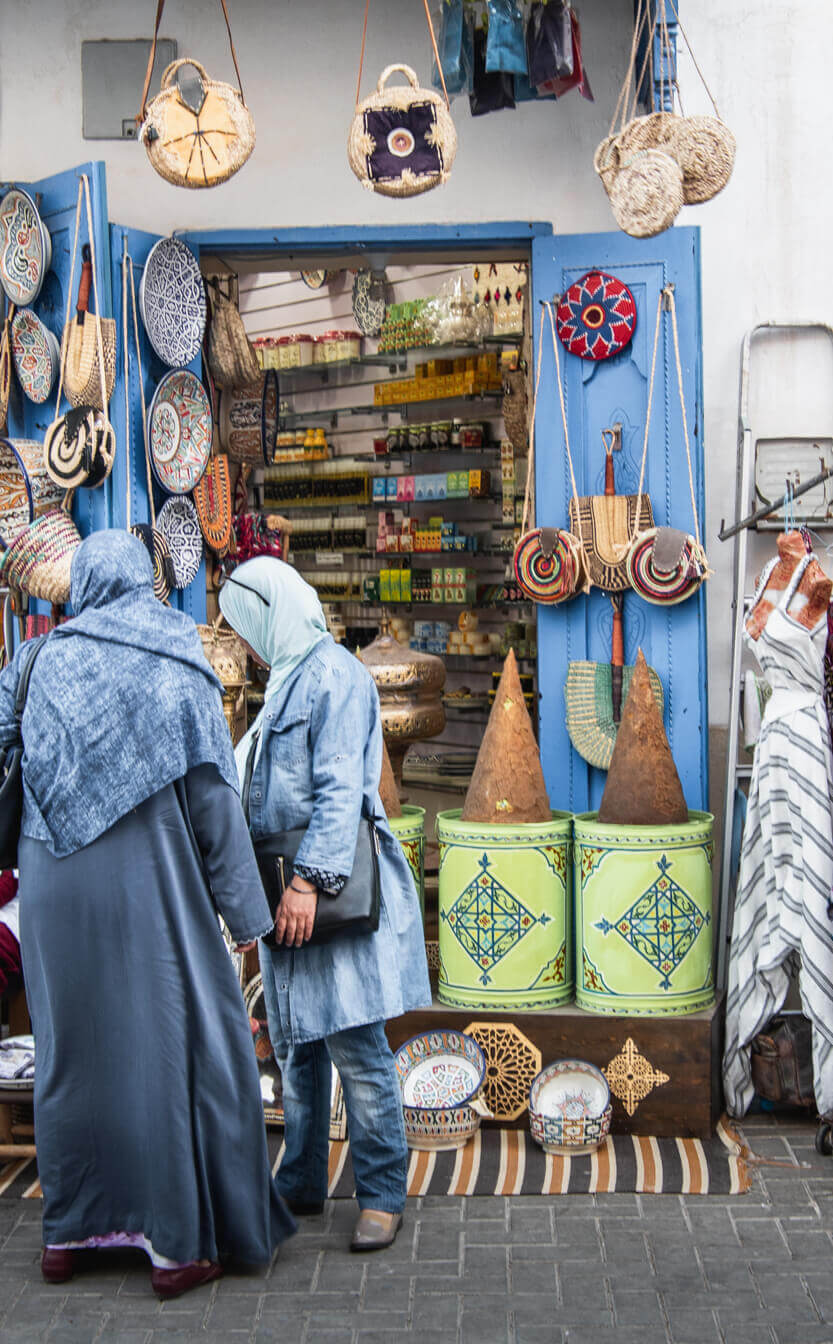
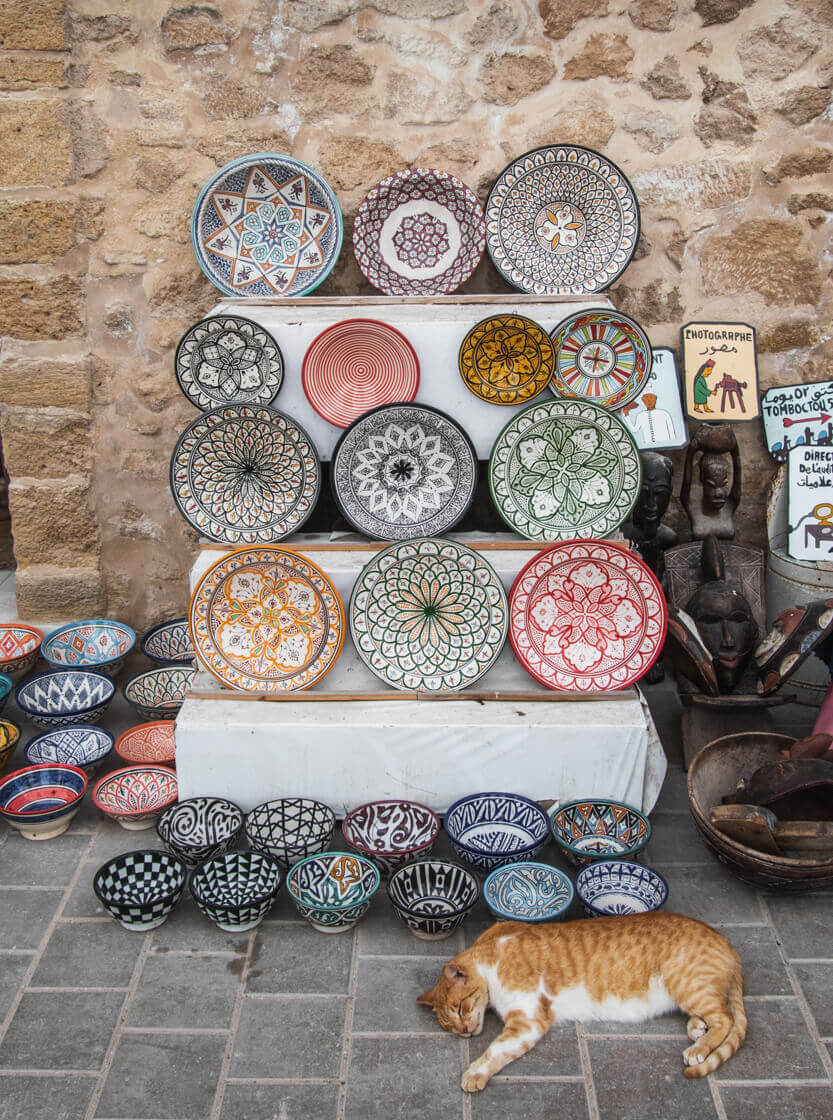
Essaouira’s medina is so iconically beautiful that it was used as a filming location for the HBO series Game of Thrones, where it stood in for the city of Astapor. The town has also served as the backdrop for movies like Gladiator, Kingdom of Heaven, Alexander, and Lawrence of Arabia.
But beauty is one thing – being there in person is quite another. Essaouira overwhelmed our senses in every way, making the experience of the city deeply memorable for us.
Experience the fishing harbor, seagulls, and the intense fish market
The greatest adventure we had in Essaouira was undoubtedly the harbor and the intense fish market. I’ve never seen such a bustling harbor. Fishermen arrived in their blue-painted wooden boats, filled to the brim with fish and seafood, and crowds of people swarmed around them to buy the fresh catch. It was vibrant and exhilarating.
But let me warn you before you head down there: Don’t wear flip-flops! The streets in that area are made up of old fish scales, fish bones, crab shells, and mussel shells, and the smell is far from mild. In fact, we had to clean our sandals when we got back from the harbor. The scent of fish and fish waste baking in the sun creates a smell that can sometimes feel overwhelmingly intense to breathe in. So, consider yourself warned. But honestly, that’s part of the charm and atmosphere down there – so go anyway!
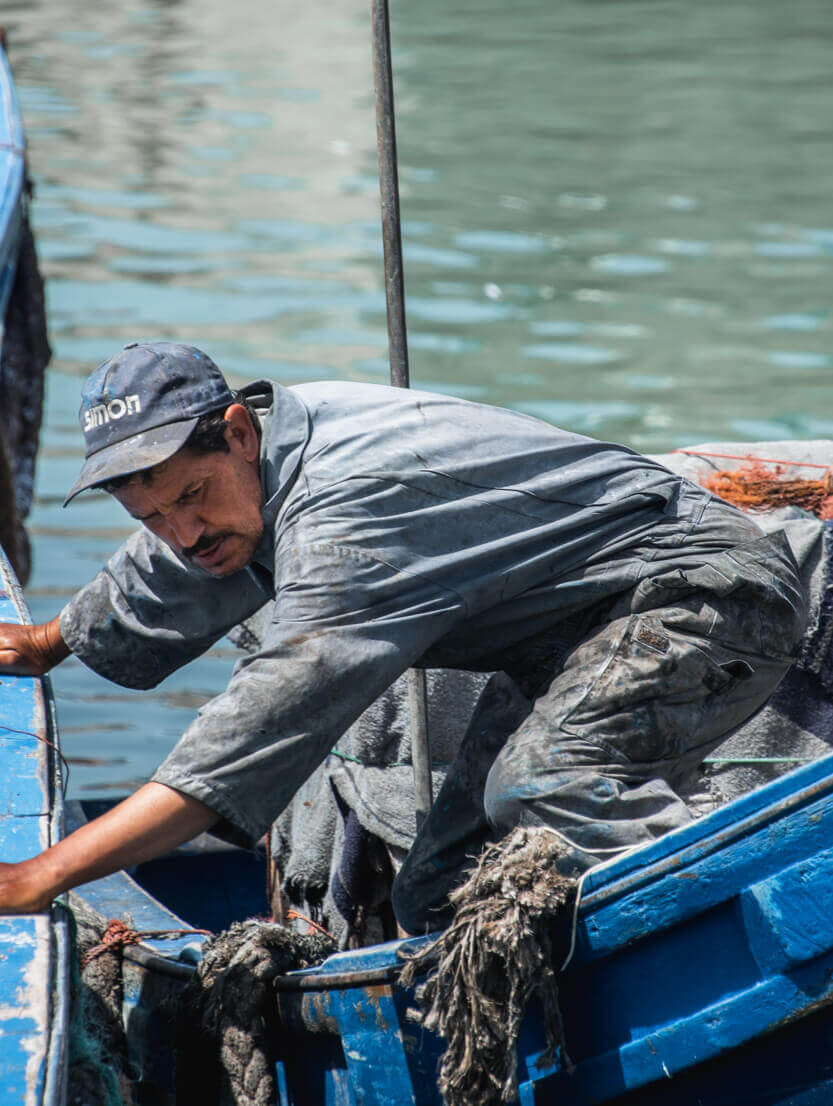
Tourists or not, the harbor is no mere spectacle. Every morning, fishermen arrive with their traditional boats, unloading the day’s (or night’s) catch to sell. The fish are sold either at small stalls or directly from the boats, where they’re displayed for anyone interested in buying.
Just take a look at the variety one of the fish stalls had. We even saw sharks for sale, along with other fascinating fish. It completely outshines the selection we’re used to when buying dinner at home.
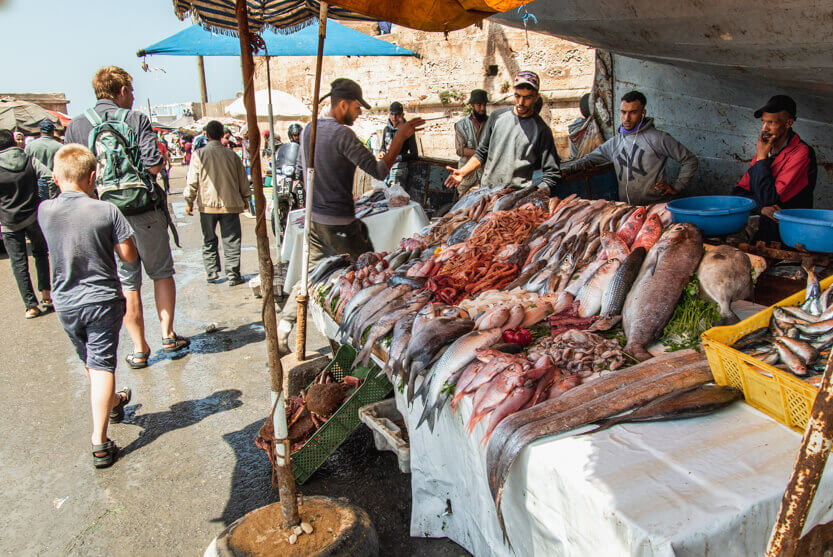
Everywhere around the harbor, fishermen and their families sit mending their nets, while seagulls cry out hungrily for the scraps thrown into the water or left to rot on the pier.
Even the old fishermen’s houses were still in use. They were so beautiful with their blue hues.
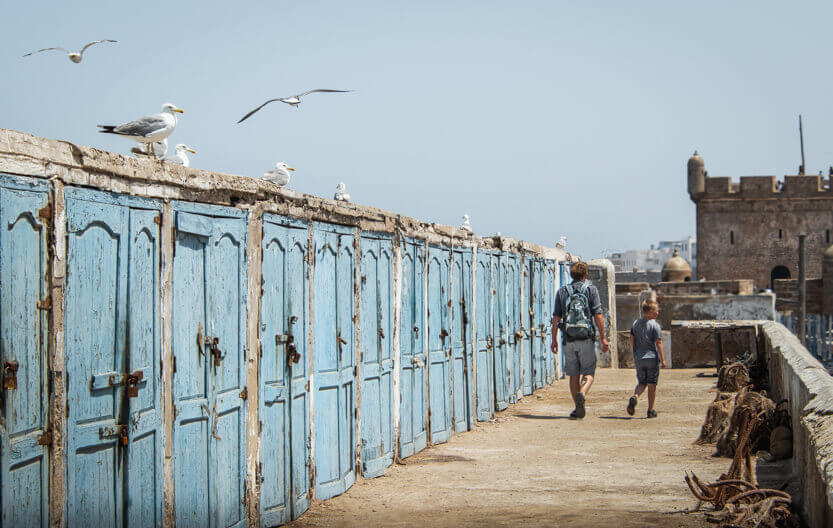
Essaouira’s harbor has long been crucial for Morocco
It was the sultan (1757–1790) who ensured that Essaouira’s harbor became a royal port, strategically positioned in a direct line from Marrakech, destined to become the main trading center for the wider world. At one time, it was the most important trading port between Africa, Europe, and America. Back then, goods like cotton and tea, ivory, ostrich feathers – and slaves – were traded here.
Today, the harbor is too small and the water too shallow for the large boats commonly used elsewhere in Morocco to dock.
Discover the historic citadel
Right in front of the old fishing harbor and fish market stands the historic Citadel, built during the Portuguese colonial period. You can’t miss it if you’re heading out to the harbor… just follow the seagulls!
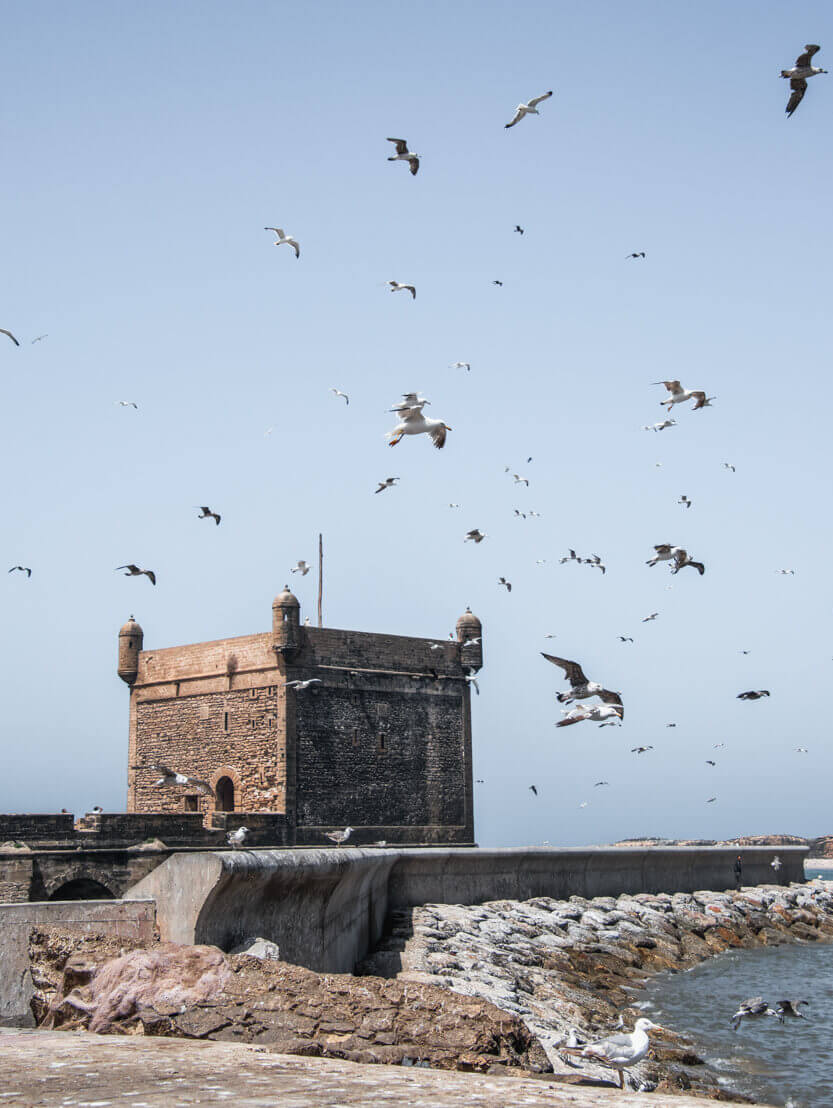
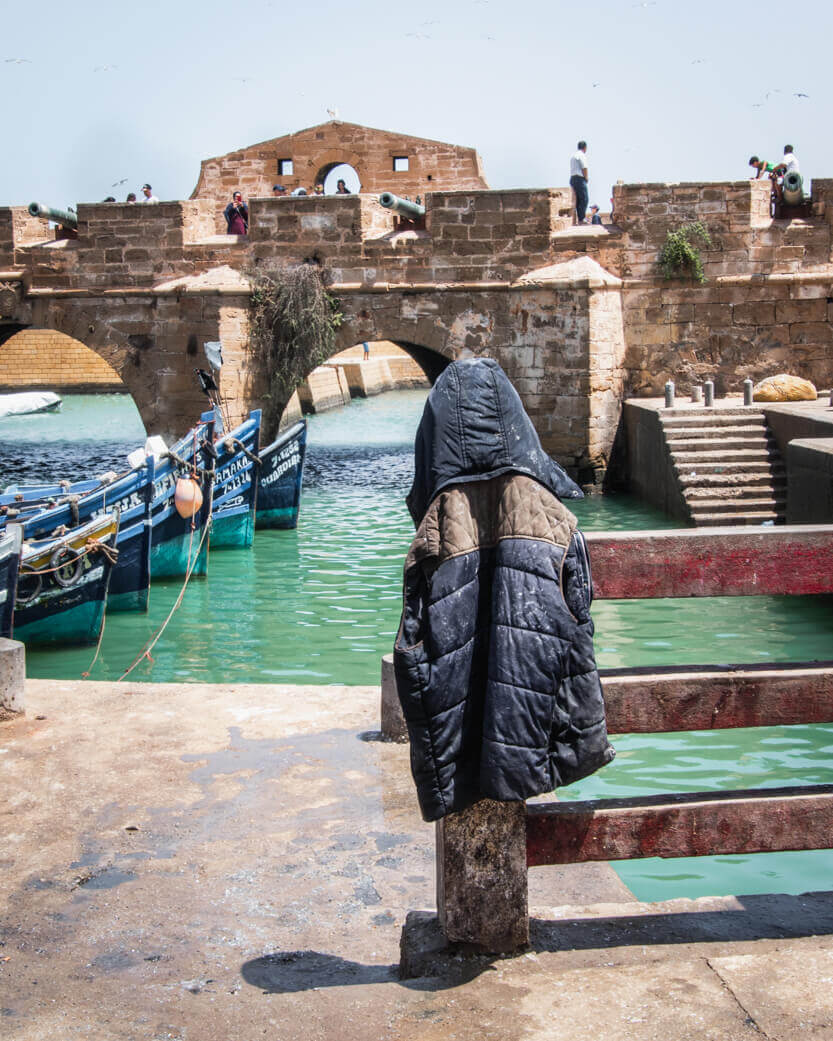
Explore the historic city walls
Essaouira’s medina is protected by three large city walls, whose gates you must pass through to enter the town. These massive ramparts shield the city from much of the wind coming off the sea, but they are also quite a sight to behold – tall, well-preserved, and impressive. On one side of the wall, you’ll find many small souks nestled in shelter and protection.
You can also climb up on the walls. In some places, there is a fee to access them, but where we went up, there was no charge. We climbed the western side of the medina, where we were treated to the most beautiful view of the Purpuraires Islands. We were almost eye-level with the falcons and seagulls, who soared in a fierce battle against the stiff wind.
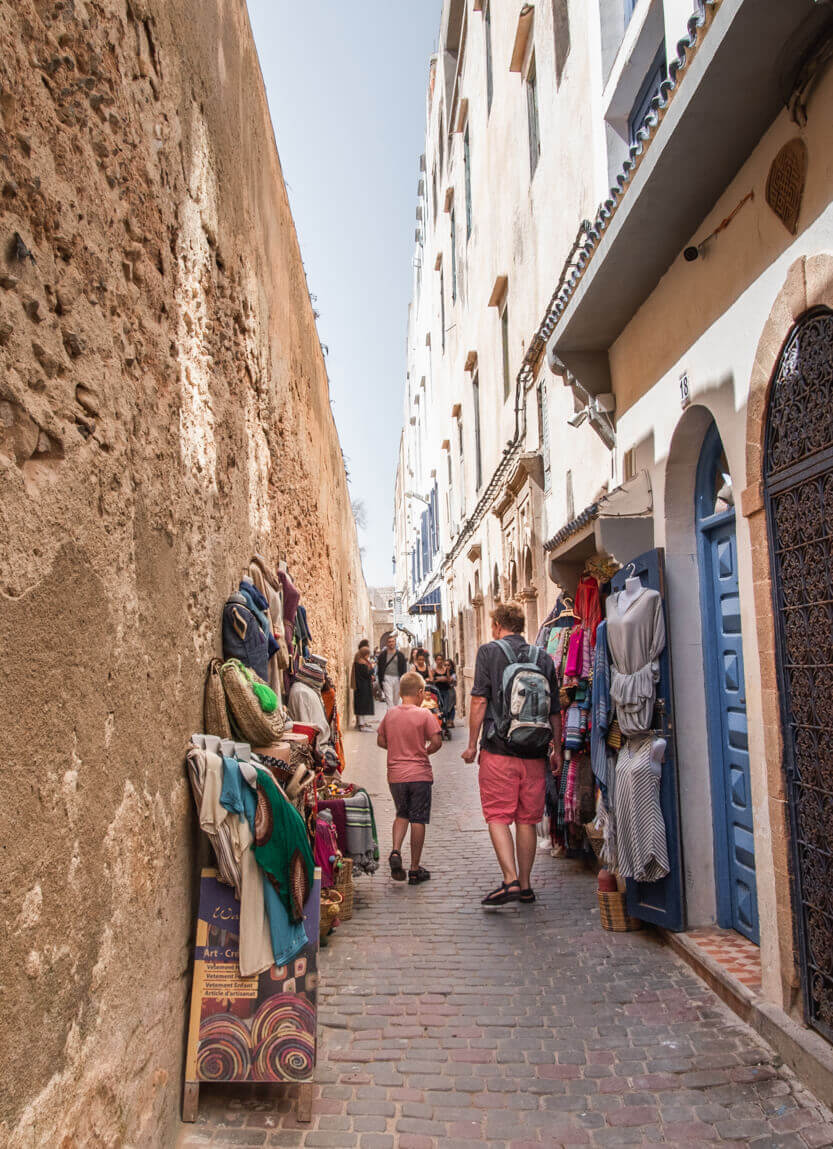
The fortifications date all the way back to 1505, when they were built by Portuguese conquerors who were later driven out of the city. At that time, Essaouira was a stronghold for goods like sugar and molasses – and, not least, a mooring place for pirates.
On the northern side of the ramparts, you’ll find old Portuguese and Spanish cannons from the era when the city had to defend itself against pirates and other forces from the sea seeking to conquer it.
Get blown away on the beach
One of the reasons Essaouira has preserved its traditional culture and character is surely the strong wind blowing in from the Atlantic Ocean. It’s almost impossible to lounge on the beach like you might at other sunny spots. Although the beach is stunningly beautiful, the ocean is freezing cold. This tends to send many tourists elsewhere, leaving mostly windsurfers drawn to the beach’s fierce winds and great waves.
Since we promised Sebastian we’d give the beach a chance, we spent a day there. Battling the strong wind and sand in our eyes and hair, we hung out for about an hour. Peter and Sebastian ventured into the water, and even though Peter is used to winter swimming at home, it took them quite some time to get fully under.
But despite the strong wind, the beach isn’t empty. It’s filled with locals enjoying themselves – swimming, playing in the sand, and meeting up with friends and family.
Stay in a historic riad
One thing was certain when we took the bus to Essaouira: we wanted to stay in a riad! A riad is a traditional Moroccan house built without outward-facing windows, but with open windows and doors facing the heart of the home. In the center of the house, you’ll find a small courtyard, often with a little pool.
We had rented the top floor, which consisted of two bedrooms, a kitchen, and a large terrace arranged around the staircase. The riad was absolutely stunning, and we enjoyed every single second we spent in that beautiful home.
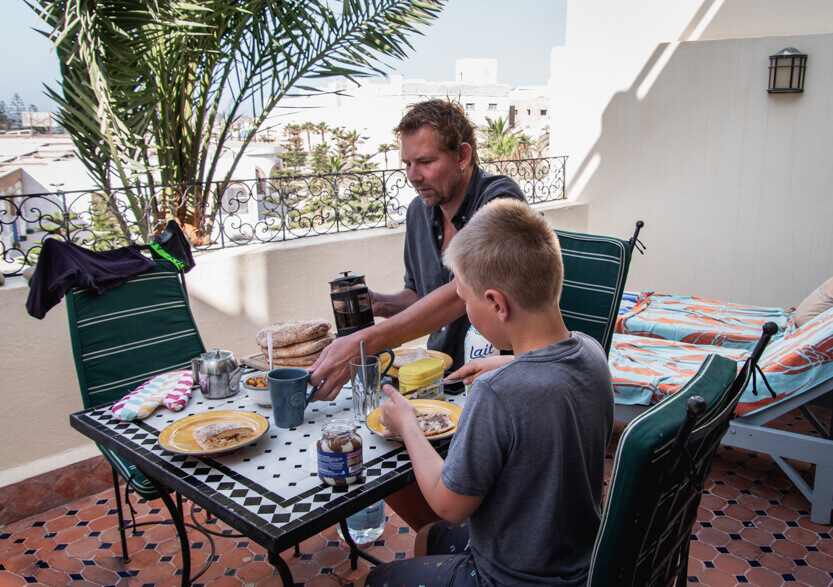
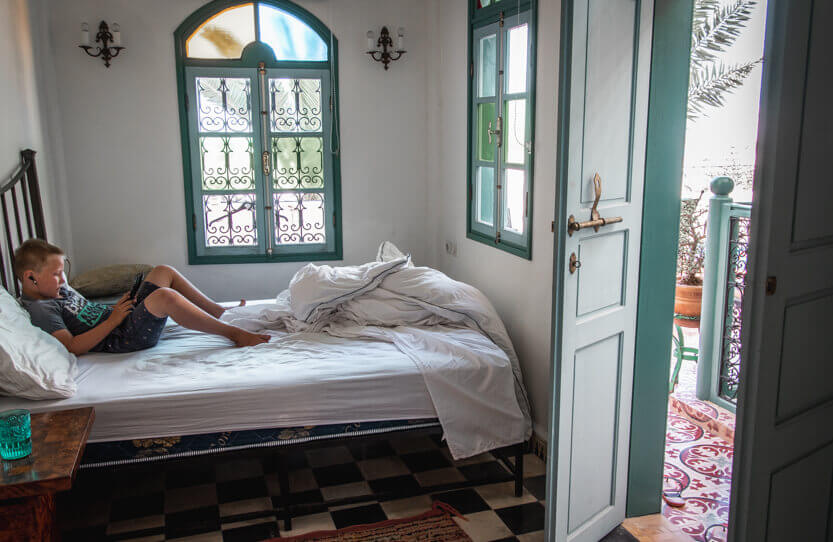
Our riad had everything we dreamed of – including a small pool in the garden. The only downside was that out of all the floors in the house, ours was the only one without direct access to the pool. Sebastian was really disappointed. Luckily, no one was staying in the ground-floor apartment, and our kind host let us use their entrance to get out to the garden so we could jump into the pool. That definitely lifted Sebastian’s spirits.
Eat Moroccan
For us, traveling is very much about tasting the country’s food to gain a deeper impression of the place we’re visiting. We had been looking forward to the Moroccan cuisine and had high expectations of how delicious it would be. We love food and are open to almost everything.
Despite our best hopes, we were unfortunately not as impressed by the many dishes we tried as we had expected. This came as quite a surprise since we had heard so much about Moroccan food and had seen so many beautiful, inviting photos beforehand.
However, there were some dishes we simply couldn’t get enough of. One was their flatbread with chicken and vegetables, which we enjoyed quite a lot during our trip. Our absolute best food experience was at a small restaurant called La Terrasse des Herbes, which has since closed down, tucked away on a little square in the heart of the medina.
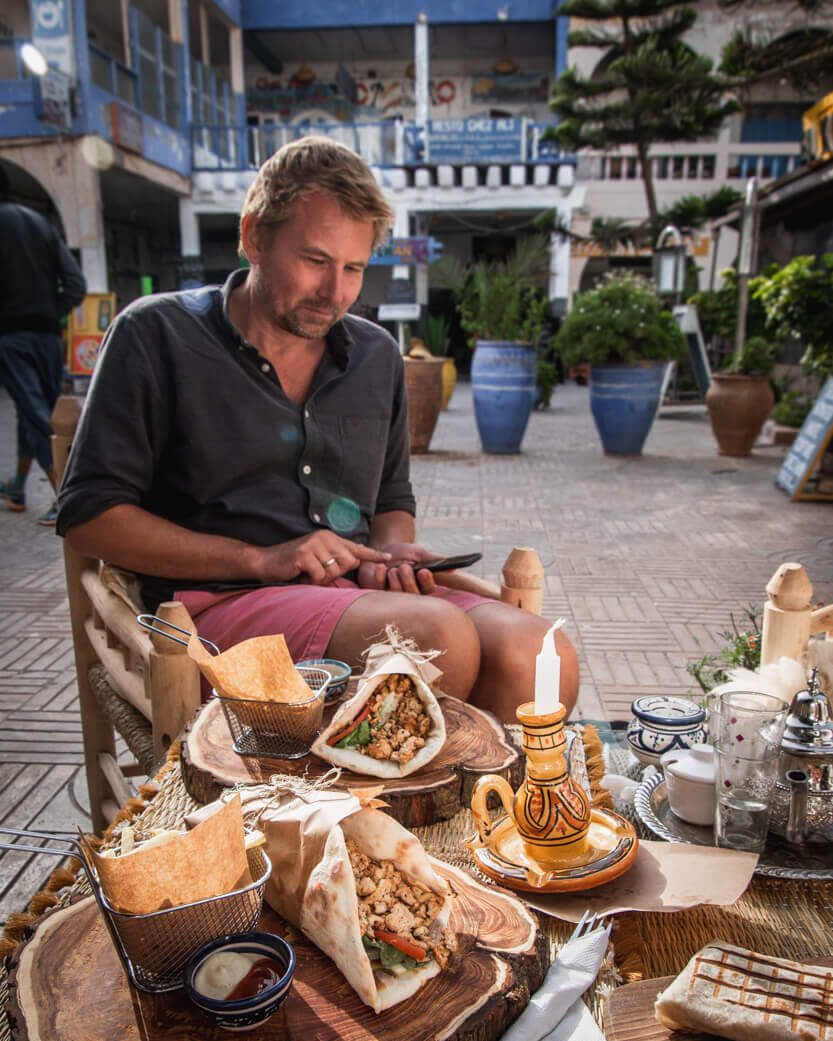
The other culinary experience we couldn’t resist was the sugary sweet pastries – spiced with cinnamon and cardamom, sprinkled with almonds – always served with steaming hot peppermint tea. Always peppermint tea. No matter the dish, no matter the moment.
The final culinary experience we couldn’t resist was the locals’ homemade (and still warm) bread, which we could buy right on the street. In Essaouira, old men wandered the medina with wooden carts stacked high with warm loaves, piled so tall the cart looked ready to tip. We sent Sebastian to ask for the bread, and the Moroccans melted – and just like that, everything was good.
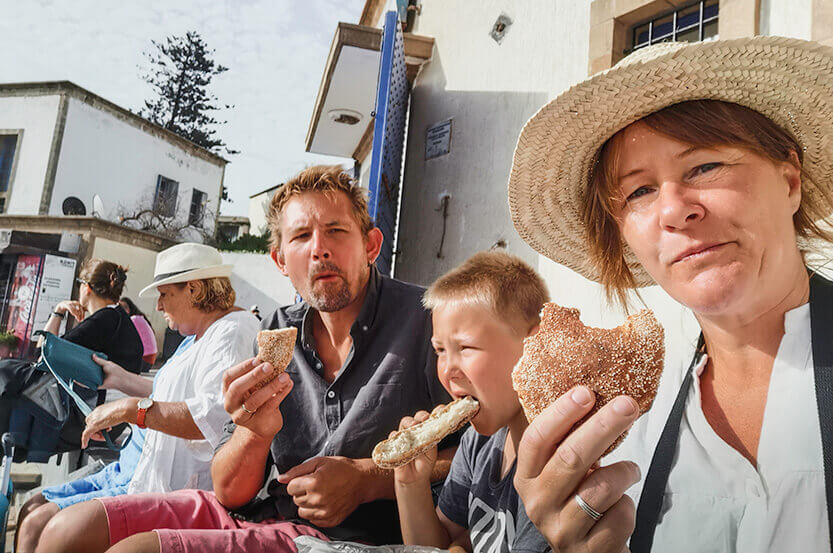
Even though we weren’t big fans of the food in Morocco, we make a point of trying as many different things as possible. Travelling on a budget naturally doesn’t give access to the more expensive restaurants with skilled chefs, but we still try to experience as much as we can in order to get the richest and deepest impression of the country, its history and culture. So go for it! We’re the only ones we’ve heard of who didn’t fall in love with the food.
Let yourself be seduced by the African rhythms
Another way to connect deeply with the country’s culture and history is through its music – Morocco is filled with sound and rhythm everywhere you go, and Essaouira is no exception. As you wander through the medina, music floats from every street corner and square, and the rhythms carried by the wind blend into a beautiful harmony.
Essaouira is especially known for a unique genre of African music called Gnawa, which fuses spirituality, rhythm, and wild dancing that builds into a hypnotic trance. The music is based on three instruments: iron castanets, a three-stringed bass called a ghimbri, and voice.
In addition to being known as a “hippie hangout” for decades, Essaouira is also famous for being a place that none other than Jimi Hendrix visited several times.
And we understand the appeal of this city. The rhythms, the vibe, and the warmth mixed with the wind are enough to make Essaouira the first place we think of when we dream of returning to Morocco.
Essaouira still holds so many adventures we have yet to discover…

